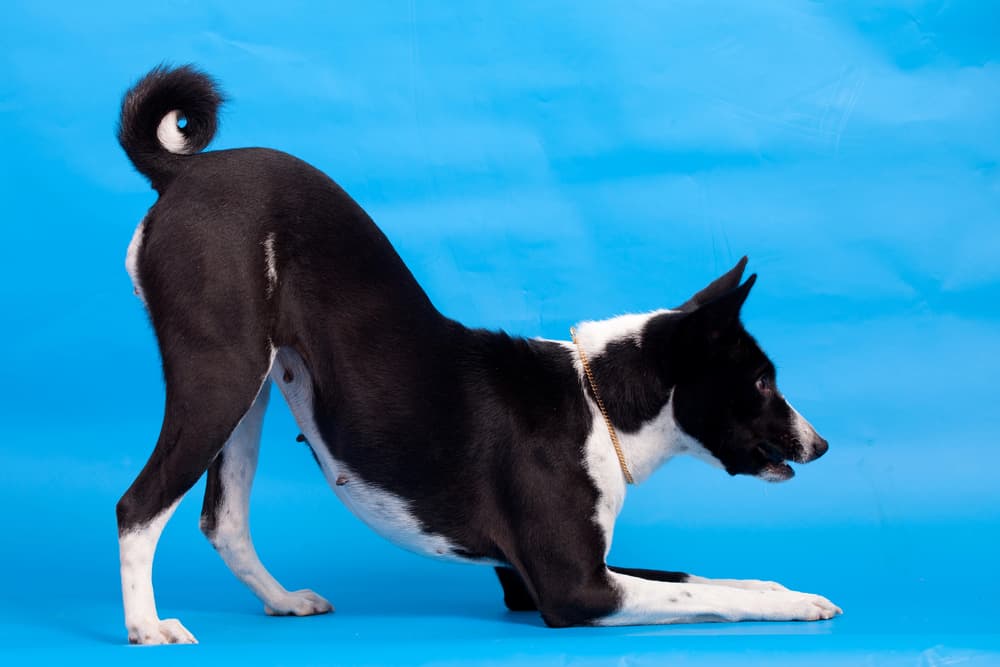
Elbow Dysplasia

Our guide has been authored by qualified veterinarians, but should not be taken as substitute for medical advice or professional veterinary consultation. If your pet displays any unusual symptoms, we strongly advise seeking guidance from a veterinarian
Understanding Elbow Dysplasia in dogs
Elbow dysplasia is a common developmental orthopedic condition that affects dogs, particularly large and giant breeds. It is a collective term used to describe several abnormal growth and development issues in the elbow joint:
Fragmented Coronoid Process (FCP): This occurs when a small piece of bone breaks off from the coronoid process, a bony prominence on one of the three bones that make up the elbow joint. The loose fragment can cause pain and inflammation in the joint.
Osteochondritis Dissecans (OCD): a condition where a piece of cartilage and underlying bone detaches from the joint surface. This can cause pain, joint effusion, and lameness.
Ununited Anconeal Process (UAP): another bony prominence on one of the bones that make up the elbow joint. In UAP, this bony process fails to fuse properly with the rest of the bone, leading to joint instability and pain.
Elbow Incongruity: This refers to a mismatch in the sizes and shapes of the bones that form the elbow joint, resulting in abnormal weight distribution and accelerated wear and tear on the joint surfaces.
Elbow Dysplasia's Causes: Uncovering Triggers
Elbow dysplasia in dogs is considered a multifactorial condition, meaning it is influenced by a combination of genetic and environmental factors. The exact cause of elbow dysplasia is not fully understood, but it is believed to result from a combination of genetic predisposition and growth-related issues during a dog’s early development.
The primary factors contributing to elbow dysplasia include:
- Genetics – It is believed to have a hereditary component, meaning it can be passed from one generation to another. Dogs with a family history of elbow dysplasia are more likely to be affected, and certain breeds have a higher incidence of the condition.
- Rapid growth – Large and giant breed dogs are more commonly affected by elbow dysplasia. Rapid growth during the early months of life can put additional stress on the developing joint, potentially leading to improper joint development and incongruity.
- Nutrition – Improper nutrition during a dog’s growth phase can contribute to developmental issues, including those affecting the elbows. Overfeeding, excess calcium supplementation, or an unbalanced diet may increase the risk of skeletal abnormalities.
- Exercise – Over-exercising or engaging in high-impact activities at a young age can stress the developing joints and contribute to joint problems.
- Body weight – Being overweight or obese can put extra strain on the joints, potentially worsening any existing developmental issues.
- Trauma -Traumatic injuries to the elbow joint during the developmental stage can also increase the risk of elbow dysplasia.
 Recognizing Elbow Dysplasia: Signs and Symptoms
Recognizing Elbow Dysplasia: Signs and Symptoms
- Lameness: which can affect one or both front legs. The lameness may be intermittent or persistent and may worsen with physical activity.
- Stiffness: Dogs with elbow dysplasia may exhibit stiffness in their front legs, especially after rest or periods of inactivity. They may have difficulty getting up or appear reluctant to put weight on the affected leg initially.
- Pain: Pain can be evident when touched or manipulated around the elbow joint. They may also exhibit signs of discomfort, such as whimpering or vocalization.
- Limping: The affected leg may be visibly favored, leading to a noticeable limp while walking or running.
- Exercise intolerance: Dogs with elbow dysplasia may be less willing to participate in physical activities they once enjoyed due to the pain and discomfort associated with the condition.
- Swelling and joint effusion: In some cases, there may be visible swelling around the affected elbow joint, and the joint may feel warm to the touch.
- Muscle atrophy: Over time, muscle wasting (atrophy) may occur in the affected leg due to reduced use and disuse of the muscles surrounding the abnormal joint.
- Clicking or popping sounds: Some dogs may exhibit audible clicking or popping sounds when moving the affected elbow joint, which can be a sign of loose bone or cartilage fragments within the joint.
Keep in mind that the clinical signs of elbow dysplasia in dogs can vary depending on the specific underlying condition and the severity of the joint abnormalities.
 Elbow Dysplasia Diagnosis: How it's Identified
Elbow Dysplasia Diagnosis: How it's Identified
X-rays can be helpful for diagnosing elbow dysplasia. The dog is usually placed under sedation or general anesthesia to ensure proper positioning for the X-rays. X-rays allow the vet to examine the elbow joint and assess for specific abnormalities associated with elbow dysplasia. Additional Imaging such as CT scans or MRI, to get a more detailed view of the joint structures and identify any soft tissue abnormalities. These modalities are much more sensitive than X-rays to pick up changes associated with elbow dysplasia. The vet will also perform a joint aspiration by extracting a small amount of fluid from the elbow joint to analyze for signs of inflammation or infection to rule out other causes of lameness. In order to directly visualize the joint structures, an Arthroscopy will be performed as well – a minimally invasive procedure where a small camera is inserted into the joint through a tiny incision.
 Treating Elbow Dysplasia: Options and Approaches
Treating Elbow Dysplasia: Options and Approaches
The treatment options for elbow dysplasia in dogs depend on the severity of the condition, the specific abnormalities present, the dog’s age, and overall health. The main goal of treatment is to alleviate pain, improve joint function, and slow down the progression of osteoarthritis. Here are the common treatment approaches:
- Conservative management: In mild cases or for dogs that are not suitable candidates for surgery, conservative management may be recommended. This approach focuses on managing pain and inflammation through the use of medications such as nonsteroidal anti-inflammatory drugs and joint supplements.
- Weight management: Maintaining an ideal body weight is crucial for dogs with elbow dysplasia, as excess weight puts additional strain on the affected joints. Weight management can help reduce pain and improve mobility.
- Exercise management: Low-impact exercise is often recommended to keep the affected joint mobile without causing further damage. Activities like controlled walks, swimming, or physical therapy can be beneficial.
- Physical therapy: Physical therapy techniques, such as hydrotherapy and therapeutic exercises, can help strengthen muscles around the joint, improve range of motion, and reduce discomfort.
- Joint injections: In some cases, intra-articular injections of medications like corticosteroids or hyaluronic acid may be used to reduce inflammation and pain in the joint.
- Surgical interventions: When conservative measures are not sufficient or the condition is more severe, surgical options may be considered. Some of the common surgical procedures for elbow dysplasia include:
-
- Arthroscopy: Minimally invasive procedure used to remove bone fragments or abnormal cartilage within the joint.
- Medial Coronoid Disease (MCD) debridement: Surgical removal of damaged medial coronoid process fragments.
- Ununited Anconeal Process (UAP) repair: Stabilizing the joint by addressing the ununited anconeal process.
- Osteochondritis Dissecans (OCD) surgery: Surgical removal or fixation of the loose cartilage flap or fragment.
- Joint replacement: In severe cases of elbow dysplasia, total elbow replacement surgery may be considered as a last resort to improve joint function and reduce pain.
Elbow Dysplasia: Surprising Facts

Elbow dysplasia often affects both elbows, although the severity can differ between the two joints.

Clinical signs of elbow dysplasia typically become evident in dogs between the ages of 4 to 10 months, although they can develop later in life as well.

The front limbs bear most of the weight in dogs, which is why elbow dysplasia can cause significant lameness and discomfort.
 Vet's Tip: Dealing with Elbow Dysplasia
Vet's Tip: Dealing with Elbow Dysplasia
If you notice any of the signs in your dog, particularly in large or giant breed puppies, it is essential to seek veterinary attention promptly. Early diagnosis and intervention can help manage the condition more effectively and improve the long-term quality of life for affected dogs. Additionally, some dogs may show minimal or subtle signs of discomfort, making regular veterinary check-ups and early detection through physical examination and imaging crucial for accurate diagnosis and appropriate management.




Price Tag

Latest in Research and Treatments
Until fairly recently, conservative treatment options for similar joint issues were relatively limited. Recently, though, a few long-term safe treatments have been added to the list. One of the innovative treatments is intra-articular injections – injections that go inside the joint, with advanced substances that sometimes promise a year without inflammation and pain. Additionally, in the past two years, a new medication has been brought to market that promises significant pain reduction in inflamed areas through subcutaneous injections once a month, just like regular vaccination shots. And the best part – it’s based on antibodies to pain receptors, making it completely safe to use!
dogs breeds Prone to Elbow Dysplasia
Did you know?
Enrolling in Animalia Pet Insurance
while your pet is healthy is a wise decision.
Waiting until a disease develops means it won't be covered.









